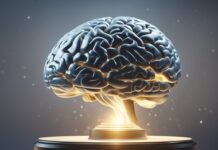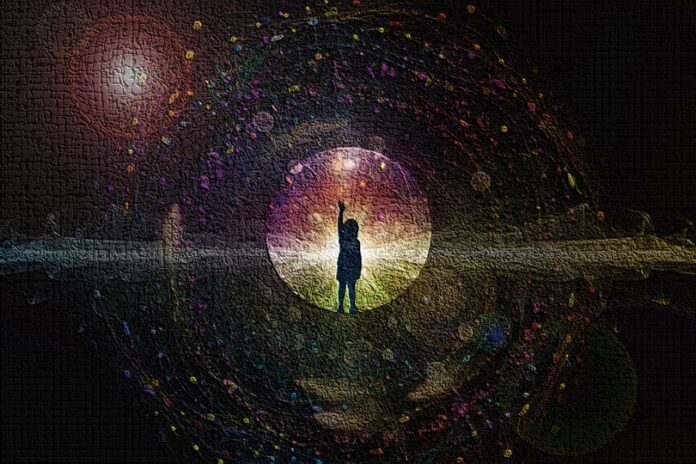
Have you ever asked yourself a question – What is reality? How do you perceive it? How do others perceive it? Is reality simulated?
There are numerous questions about reality and probably none have been truly answered throughout history.
And not that people haven’t tried.
In fact, many philosophers and scientists lost their minds trying to get to the bottom of reality. Both from the perspective of physical (matter/particles) and immaterial reality.
This so-called dualism birthed even more questions; What is mind? What is the body? How are they connected? Are they connected? Is reality the sole fabric interconnecting mind, body, and everything in between in our world and in all other worlds?
There is much more to reality than meets the vision, or any other of our 5 senses.
Reality is a complex (if not the most complex) topic that has been explored by various fields of human inquiry, such as physics, philosophy, psychology, religion, art, and literature.
Everybody is fascinated by the term reality and by reality itself, yet no one actually knows what it is.
Do we even have a definition of reality?
Let’s see…
Related: 10 Books That Will Make You Rethink Reality, Best Non-Fiction Books About Multiverse?, Simulation Hypothesis: A Brief History and Origin.
Definition – What is Reality?
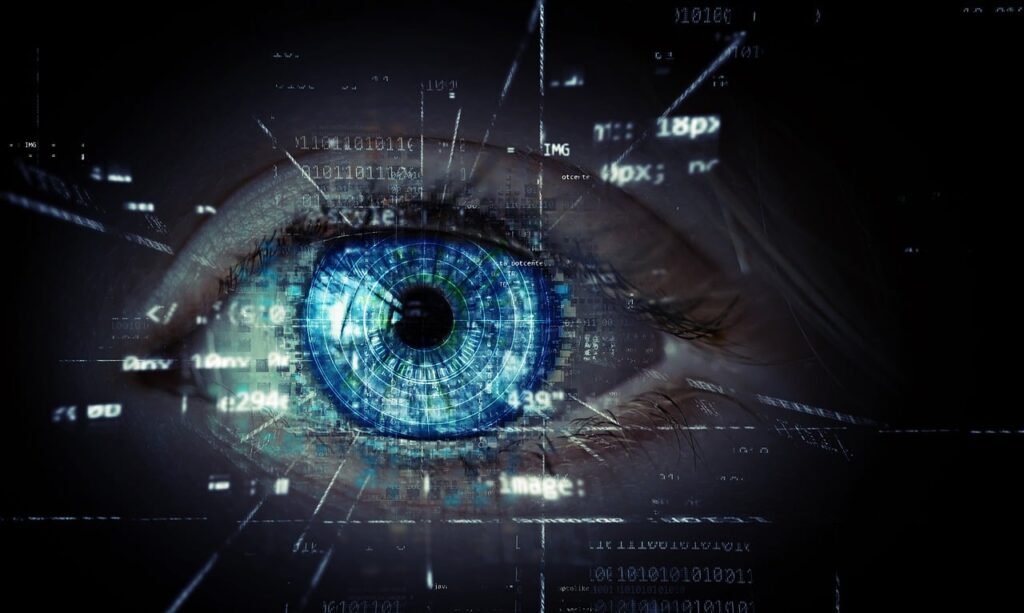
Obvious places to search for a definition of reality are different dictionaries.
Cambridge Dictionary defines reality as the state of things as they are, rather than as they are imagined to be.
This definition implies that reality is objective and independent of our perceptions, beliefs, and attitudes. However, this also raises the problem of how we can know reality, since we can only access it through our senses and instruments, which may be limited or distorted and certainly not objective.
So, our own perception of reality actually contradicts the sole definition of reality.
Not a good start!
Let’s try the Merriam-Webster dictionary. ¸
Merriam-Webster states that reality is the quality or state of being real. Or in other words – the totality of real things and events.
This definition implies that reality is comprehensive and inclusive and that it encompasses everything that exists or could exist in the universe.
However, this also raises the problem of how we can define or measure reality, since it may contain things that are beyond our observation or comprehension, such as dark matter, dark energy, or other dimensions.
So, Merriam-Webster is also leaving us with a semi-blank slate.
Where else can we look for answers? Let’s try with philosophers, scientists, and some books and blogs:
- Immanuel Kant’s view on reality is based on his doctrine of transcendental idealism, which claims that the only world we can know is the world created by the innate structure of our minds. Kant distinguished between phenomena, which are the appearances that constitute our experience, and noumena, which are the things themselves that constitute reality. Kant argued that reality as it is in itself is unknowable to us.
- Albert Einstein once said, “As far as the laws of mathematics refer to reality, they are not certain; and as far as they are certain, they do not refer to reality”. This quote is often interpreted to mean that the laws of mathematics are not necessarily a reflection of reality, but rather a human construct that can be used to describe the world around us. Einstein also famously said, “Reality is merely an illusion, albeit a very persistent one”. This quote is often interpreted to mean that our perception of reality is subjective and can be influenced by our own biases and experiences. In summary, Einstein’s views on reality were complex and multi-layered. While he believed that the laws of mathematics could be used to describe the world around us, he also recognized that our perception of reality is subjective and can be influenced by a variety of factors.
- According to a book by Deepak Chopra and Menas Kafatos, reality is a cosmic dance between the observer and the observed. The book proposes that reality is not a fixed and objective thing, but a dynamic and subjective process that depends on the interaction between consciousness and the physical world.
- According to a book chapter by James B. Glattfelder, reality is full of ontological enigmas that defy our understanding. The chapter examines the structure of reality at small and large scales, and how it reveals the limitations of our current physical theories, such as quantum field theory and general relativity. The chapter also questions some of the fundamental concepts of reality, such as matter, time, and causality, and suggests that reality may be more mind-dependent than we think.
So obviously everybody defines reality in a different way. And that is completely logical if you really think about it. Namely, as mentioned, everybody perceives reality differently, therefore everybody defines reality differently.
Will we ever have a final answer? Is the final answer even possible?
Well, from the perspective of matter, it should be possible because matter should consist of something.
And it does, but we’re constantly finding out that there are even smaller “things” that are the sole “builders” of matter or (physical) reality.
Brief History of Material Reality Discoveries

2,500 years ago, Democritus suggested that all matter in the universe was made up of tiny, indivisible, solid objects he called “atomos.”
Nonetheless, he didn’t have any advanced tools to confirm his thoughts.
More than 2000 years later (in 1808), chemist John Dalton developed a very persuasive argument that led to an amazing realization: Perhaps all matter (i.e., stuff, things, objects) is made of tiny, little bits. Fundamental bits. Indivisible bits. Atomic bits.
However, Robert Brown, a Scottish botanist, is credited with the earliest direct evidence of atoms. In 1827, he observed the intricate movement of small pollen grains suspended in stagnant water, marking a significant observation of atomic behavior. This phenomenon is observable through a microscope for any diminutive particles present in a fluid.
But then in 20th century, we (humans) discovered that even smaller particles exist.
Those are called quarks.
And today different scientists propose that so-called “preons” could be even smaller particles and that they are subcomponents of quarks and leptons.
Then we also have string theory…
And then again – we have nothing…
Ok, to be fair – not nothing. We have many different theories.
And all of that, all the different findings and theories mentioned in previous paragraphs – all are trying to explain only one part of reality.
So-called material reality.
We still don’t have a clue about non-material reality.
So, let’s begin dissecting diverse parts of reality from many different perspectives.
Perhaps we’ll arrive at some clearer point. And perhaps we’ll make 360 degree journey, coming back to the same place where we’ve been at the beginning of this article.
Nonetheless, it’s worth a try.
First, let’s start with what we humans actually perceive and see as a reality and what we do not see nor perceive.
Human Sensory Experiences and Reality
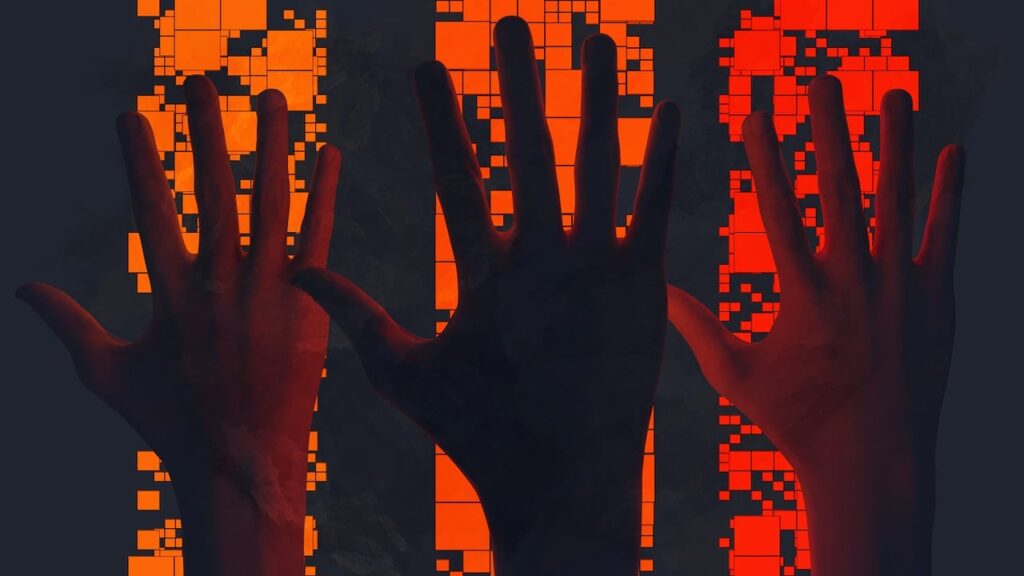
Our understanding of reality is intricately tied together with our senses. Sight, hearing, touch, taste, and smell collectively form the lens through which we perceive the world and thus – our reality.
Basically, we cannot see (nor feel) many things that are happening around us, because of limitations of our senses.
The Spectrum of Sight
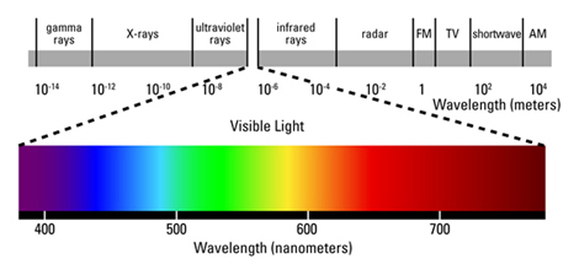
As visual creatures, humans rely heavily on sight to navigate and interpret their surroundings. However, the reality we perceive is limited by the narrow band of the electromagnetic spectrum that our eyes can detect.
The human eye is sensitive to photons with wavelengths between 400 to 700 nanometers, encompassing the colors of the rainbow – from violet to red. This tiny part of the vast electromagnetic spectrum is what we perceive as visible light.
Within this narrow range, each color corresponds to a specific wavelength. Violet light, with the shortest wavelength, sits at around 400 nanometers, while red light, with the longest wavelength, extends to approximately 700 nanometers.
Our brains interpret these different wavelengths as distinct colors, creating the rich palette of the visual world.
However, beyond this range, a vast spectrum of electromagnetic waves exists, including radio waves, microwaves, infrared, ultraviolet, X-rays, and gamma rays, each with its own unique wavelength and properties.
Invisible Realities: Ultraviolet and Infrared

The limitations of our vision become apparent when we consider the existence of ultraviolet (UV) and infrared (IR) light. UV light, with shorter wavelengths than violet, is invisible to the human eye, though some animals can perceive it.
For example, during the 2010s, Glen Jeffery discovered that a variety of mammals, including reindeer, dogs, cats, pigs, cows, ferrets, and others, possess the ability to perceive ultraviolet light through their short blue cones.
Of course, it is understood that all animals perceive the world and reality completely differently than we humans.
However, this is a good example of rather specific capabilities of some animals that are not available for humans.
Just imagine how differently we’d perceive reality if we were able to see ultraviolet lights. The whole world would be completely different.
But only different FOR US.
Because the world would stay the same. Completely the same, yet completely different for us if we were to acquire just this one capability (seeing ultraviolet lights).
This is only one example. There are many other things not perceivable by us humans.
On the other end of the spectrum, infrared light, with longer wavelengths than red, is also beyond our visual perception.
Yet, both UV and IR light carry valuable information about the world around us. UV light reveals patterns on flowers that guide pollinators, while IR light can expose temperature variations and energy emissions, showcasing hidden facets of reality.
The Technicolor World and Reality for Animals
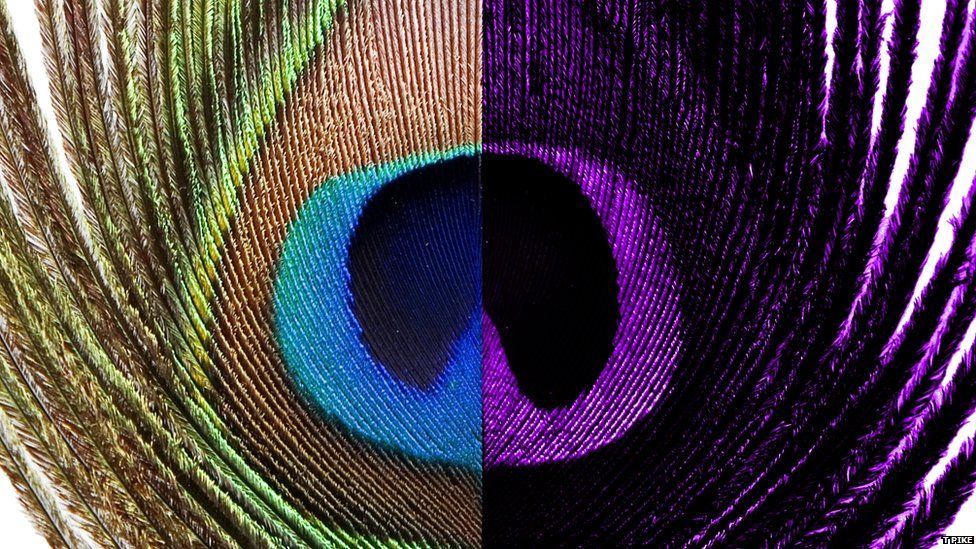
The human visual spectrum is just one variation in the grand tapestry of sensory experiences across the animal kingdom. Many animals possess unique adaptations that expand or narrow their perception of the electromagnetic spectrum.
Bees, for instance, can see into the ultraviolet range, allowing them to discern patterns on flowers that are invisible to us.
Snakes, on the other hand, can detect infrared radiation, helping them locate prey in the dark.
These variations in sensory perception underscore the subjectivity of reality, shaped by the sensory tools each species possesses.
This again brings us back to some of the definitions we’ve mentioned at the beginning of the article.
Reality (for us and for every other species), is purely subjective.
However, this is not the true or ultimate reality. It is reality “shown” to us and interpreted only by us.
So, in that sense, our senses (pun intended) actually serve as some kind of perceptual filter for the true reality.
The Perceptual Filter: How Senses Shape Reality?
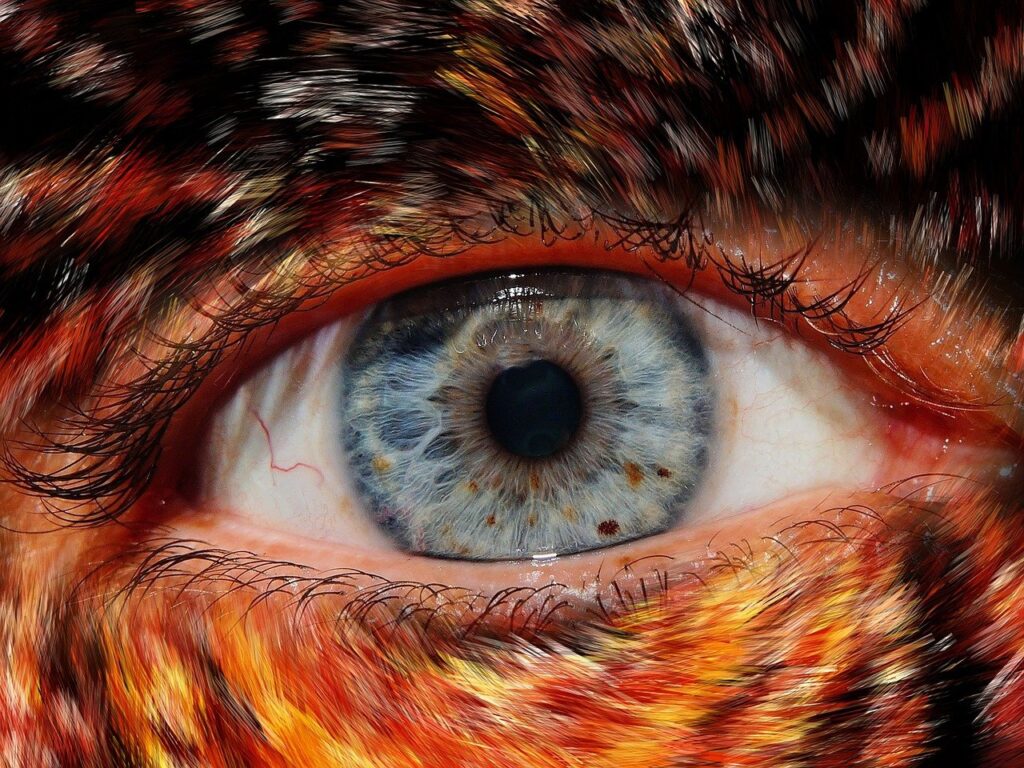
Our sensory limitations raise profound questions about the true nature of reality. The world we see is not an objective representation but a filtered and interpreted version created by our senses.
The visible light spectrum becomes a perceptual filter, shaping our understanding of the environment. As we acknowledge this limitation, we confront the idea that our perception is just one of many potential windows into the true nature of reality.
Beyond this (for us) visible realm lies a vast expanse of uncharted territory, waiting to be explored through the lens of technology and scientific curiosity.
As we ponder the implications of our sensory limitations, we open doors to a deeper understanding of the complicated relationship between perception and the elusive true nature of reality.
This leads us to discover even more details about our senses and our limitations in perceiving the true reality.
Dimensions of Reality that Elude Our Senses
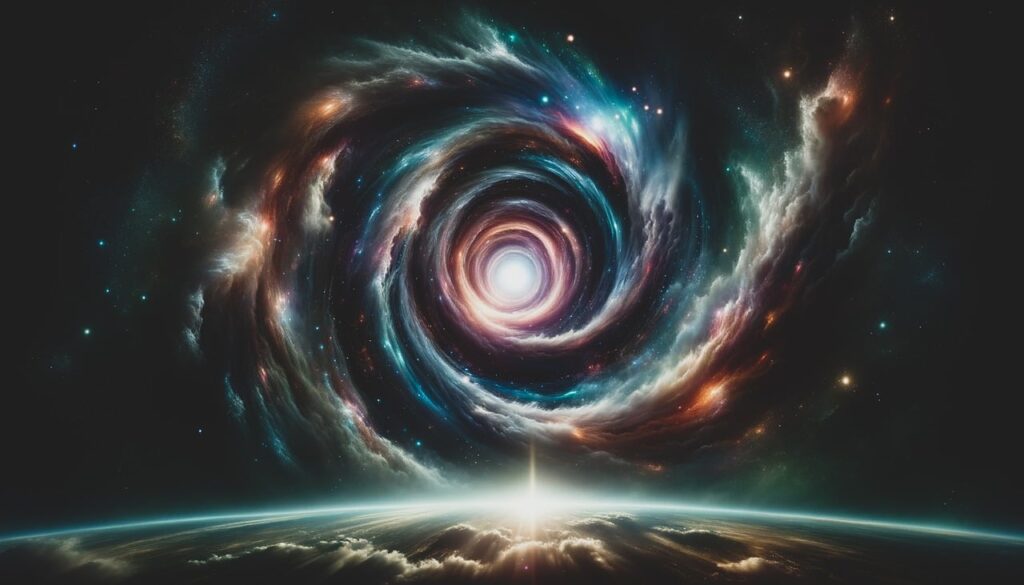
What lies beyond the scope of human perception is an enormous realm, hidden from our senses but existing nonetheless.
Our sensory limitations, particularly in the realm of sight, prevent us from directly perceiving many aspects of the universe and the true nature of reality.
Here are some additional dimensions of reality that escape our senses:
1. Microscopic Realms: The human eye, despite its remarkable capabilities, cannot perceive the microscopic landscapes that exist at scales much smaller than the width of a human hair. The intricate structures of cells, microorganisms, and molecules remain hidden from our direct view.
So, basically, humans lived with completely different view of reality for 99.99% of their existence. Only in the last couple of centuries, and mostly because of the Microscope invention we begun to realize and perceive so called microworld.
For thousands and thousands of years, we’ve had no idea about different bacteria and other organisms living beside us, in us, and on our bodies 247/7. So, suddenly, with the microscope invention – our view of reality changed forever.
2. Dark Matter and Dark Energy: The majority of the universe consists of mysterious substances called dark matter and dark energy. These entities, which do not emit, absorb, or reflect light, are completely invisible to our eyes and current detection technologies. The nature of dark matter and dark energy remains one of the most significant puzzles in astrophysics, a puzzle that our senses alone cannot solve.
3. Gravitational Waves: Gravitational waves, ripples in the fabric of spacetime caused by the acceleration of massive objects, are another phenomenon beyond human perception. Unlike light or sound waves, gravitational waves do not interact with matter in a way that our senses can detect directly. The development of sophisticated instruments like LIGO and Virgo has allowed scientists to indirectly observe these waves, opening a new window into the universe.
4. Multidimensional Space: The concept of extra dimensions beyond the familiar three spatial dimensions (length, width, and height) challenges our intuitive understanding of space. Theoretical frameworks such as string theory suggest the existence of additional dimensions, but these dimensions, if they exist, remain beyond the grasp of our sensory experience and thus beyond our reality.
5. Subatomic Particles: The subatomic realm, consisting of particles such as quarks, neutrinos, and bosons, is another domain hidden from our direct perception. Particle accelerators and detectors provide tools for scientists to explore this minuscule world, unraveling the fundamental building blocks of matter and the forces that govern them.
6. Consciousness and Subjective Experience: The nature of consciousness itself, despite being a fundamental aspect of human experience, remains a mystery. Our inner thoughts, emotions, and subjective experiences are intangible and cannot be directly observed by others. Understanding the true nature of consciousness is an ongoing challenge that extends beyond the boundaries of what can be seen or measured.
And so, ask yourself the following question: Who (or what) produced the thought you have in your mind right now?
What about now?
Thoughts come and go, and most of the time we create them unintentionally.
You just start to have this specific thought and have no idea what produced it.
According to research, the average person has approximately 60,000 thoughts per day. Those thoughts shape our inner (and outer) realities, and most of the time we don’t have any control over them.
Does that mean we don’t have control of our reality?
Well, not exactly but we can confidently say that from one perspective – reality is being created for us.
We’ll delve deeper into that topic later in this article.
For now, let’s continue with dimensions of reality that escape our senses.
7. Exotic Matter and Antimatter: Exotic matter, including antimatter, is a form of matter composed of antiparticles. While antimatter is routinely produced in laboratories, large amounts of it are not naturally found on Earth. The interactions between matter and antimatter remain elusive due to their annihilation upon contact, making the exploration of this exotic realm a complex and challenging endeavor.
8. Quantum Superposition: In the quantum realm, particles can exist in multiple states simultaneously, a phenomenon known as superposition. This concept, famously illustrated by Schrödinger’s cat, challenges our classical intuitions about the nature of reality. While experiments demonstrate the existence of superposition, the actual experience of particles existing in multiple states simultaneously eludes direct human observation.
9. Higher Dimensions of Existence: Beyond the three spatial dimensions (3d) we perceive, there may be additional dimensions that shape the fabric of reality. The exploration of higher dimensions, as suggested by certain theories in physics, delves into realms that go beyond our everyday sensory experience. Understanding these dimensions requires abstract mathematical frameworks and conceptual tools that extend beyond what our senses can directly apprehend.
10. Parallel Realities and Multiverse:
The idea of parallel realities or a multiverse suggests the existence of multiple, potentially infinite, universes coexisting alongside our own. These parallel realms might have different physical laws, constants, and even alternate versions of ourselves. The concept arises from certain interpretations of quantum mechanics and cosmological theories. While this idea tantalizingly expands our understanding of reality, the parallel universes, if they exist, remain beyond our direct sensory perception, challenging conventional notions of a singular, observable reality.
In essence, what we don’t see or perceive as humans spans a spectrum from the microcosmic to the macrocosmic, from the hidden realms of the quantum to the vast expanses of the cosmos.
While our senses provide a rich and meaningful experience of the world, the limitations inherent in our perception underscore the necessity of scientific exploration, technological innovation, and philosophical inquiry to unveil the mysteries that lie just beyond our senses’ reach.
And even though in the future we may find all possible aspects of reality (that are currently hidden from our senses), will that then mean that we would be able to define and comprehend reality in its fullness?
Not really.
Because, then again there could be some other categories of reality that are still hidden from us.
And, so – if we cannot explain reality with science and physics, can we perhaps do it philosophically?
Let’s see what different bright minds throughout history had to say about it.
Philosophical Explanations of Reality
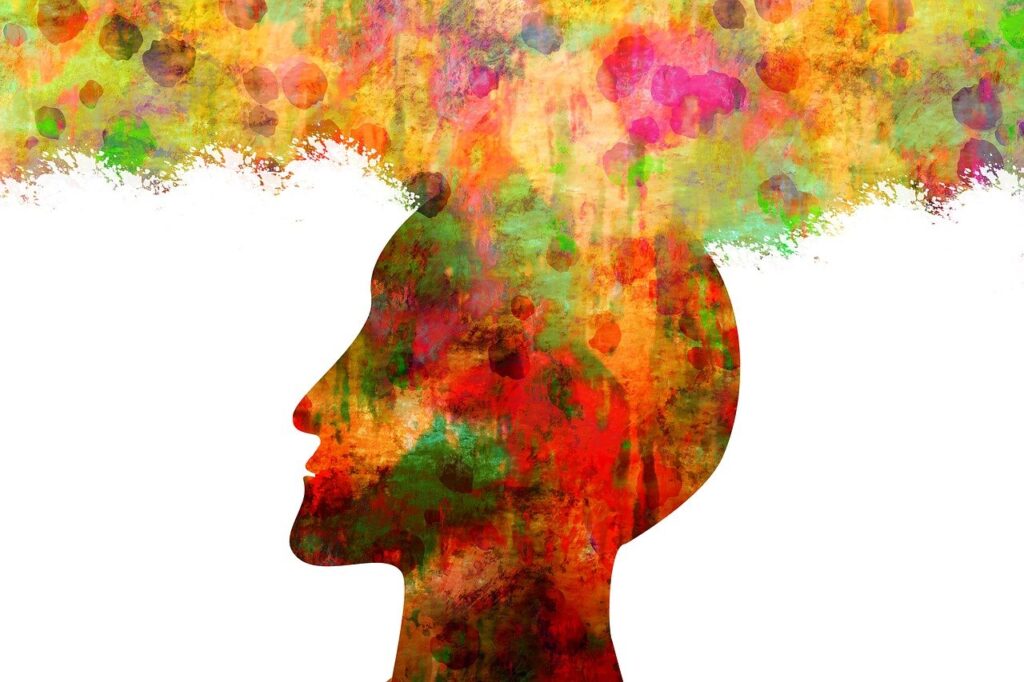
Nobody spent more time trying to figure out reality than philosophers. From ancient Greek thinkers to modern philosophers, the exploration of reality has been a central theme, with various schools of thought offering profound insights and compelling perspectives.
Ancient Greek Philosophers
The journey into philosophical contemplation of reality finds its roots in ancient Greece, where thinkers grappled with fundamental questions about existence. Parmenides, advocating for a singular, unchanging reality, clashed with Heraclitus, who famously declared that change is the only constant. Plato, in his Allegory of the Cave, presented a metaphorical narrative illustrating the journey from the shadows of ignorance to the enlightenment of true knowledge. These foundational ideas laid the groundwork for millennia of philosophical exploration.
Cartesian Dualism and the Mind-Body Problem
René Descartes, a pivotal figure in the development of modern philosophy, introduced Cartesian dualism, positing a clear distinction between mind and body. This dualism raised profound questions about the nature of reality and the relationship between consciousness and the physical world. The enduring mind-body problem emerged, challenging philosophers to reconcile the subjective realm of consciousness with the objective reality of the material world.
Immanuel Kant’s Transcendental Idealism
In the 18th century, Immanuel Kant offered a revolutionary perspective with his transcendental idealism. Kant argued that reality is shaped by the structures of the human mind, asserting that our perception is not a passive reflection of an external reality but an active construction within the confines of our cognitive apparatus. This notion transformed philosophical discourse, emphasizing the role of human subjectivity in shaping our understanding of the world.
Existentialism: Jean-Paul Sartre and the Subjective Nature of Reality
Existentialist thinkers, notably Jean-Paul Sartre, delved into the existential dimensions of reality, focusing on the individual’s subjective experience and responsibility in creating meaning. Sartre’s assertion that existence precedes essence encapsulates the existentialist perspective, emphasizing human agency and freedom in navigating the complexities of reality. In this existential landscape, reality becomes a canvas for individual choices and authentic existence.
Phenomenology: Edmund Husserl’s Exploration of Consciousness
Edmund Husserl, the founder of phenomenology, redirected philosophical inquiry to the phenomena of consciousness. Phenomenology seeks to describe and analyze the structures of experience without presupposing any pre-existing concepts. Husserl’s emphasis on the intentional nature of consciousness and the bracketing of assumptions paved the way for a deeper understanding of how consciousness engages with reality, offering a methodological approach to the exploration of subjective experience.
Eastern Philosophy: Vedanta, Taoism, and Zen Buddhism
Beyond the Western philosophical tradition, Eastern philosophies provide unique perspectives on the nature of reality. Vedanta, a school of Hindu philosophy, explores the concept of Brahman as the ultimate reality beyond the illusory world of appearances. Taoism, rooted in ancient Chinese thought, contemplates the Tao as the underlying principle of reality. Zen Buddhism emphasizes direct experiential insight into the nature of reality, transcending conceptual distinctions.
Postmodernism: Deconstruction and the Plurality of Realities
In the 20th century, postmodernist thinkers like Jacques Derrida challenged traditional notions of truth and reality through deconstruction. Derrida’s critique questioned the stability of meaning, inviting an awareness of the multiplicity of interpretations and the inherent instability of language. Postmodernism, with its skepticism towards grand narratives, prompted a reconsideration of how we construct and perceive reality in a world saturated with diverse perspectives.
Process Philosophy: Alfred North Whitehead and the Flux of Becoming
Alfred North Whitehead‘s process philosophy introduced the idea that reality is not static but in a constant process of becoming. This dynamic perspective emphasizes the interconnectedness and fluidity of all things. Whitehead’s philosophy invites us to view reality as a continuous flow of events, challenging the notion of a fixed and unchanging existence.
Metaphysical Realism and Idealism: Exploring the Nature of Being
The debate between metaphysical realism and idealism continues to shape discussions about the true nature of reality. Realists argue for the independent existence of a mind-independent reality, while idealists contend that reality is fundamentally dependent on consciousness. This age-old philosophical dichotomy raises profound questions about the nature of existence and the true reality.
The philosophical journey into the nature of reality remains an ongoing exploration, and it will remain so as long as there are conscious beings alive.
And we humans as conscious beings constantly ask ourselves different questions about reality.
Philosophy is answering some of those questions and science is answering other questions.
Sometimes they intertwine trying to provide the best answers.
And so, while we already delved briefly into scientific explanations of material reality, we need to dive deeper into the quantum field to seek additional answers there.
Quantum Reality

As we navigate the philosophical and scientific landscape in our expedition to comprehend the true nature of reality, we will surely encounter a realm that defies classical intuitions and challenges the very fabric of our understanding—quantum reality.
Quantum Mechanics
At the turn of the 20th century, quantum mechanics emerged as a revolutionary framework to explain the behavior of particles on the smallest scales. Pioneered by figures like Max Planck, Albert Einstein, Niels Bohr, and Erwin Schrödinger, quantum mechanics introduced a paradigm shift in our understanding of the building blocks of the universe.
The theory posits that particles, such as electrons and photons, do not behave like classical objects but exhibit both particle and wave-like characteristics, a phenomenon known as wave-particle duality.
Werner Heisenberg’s uncertainty principle, a cornerstone of quantum mechanics, asserts that certain pairs of properties—such as a particle’s position and momentum—cannot be simultaneously measured with absolute precision.
This inherent limit to our knowledge introduces a fundamental indeterminacy into the nature of reality, challenging the classical notion of a deterministic universe.
This leads us to the Schrodinger cat hypothesis.
In Schrodinger’s hypothetical scenario, a cat enclosed in a sealed box exists in a superposition of being both alive and dead until observed.
The cat’s state is entangled with the quantum state of a subatomic particle, illustrating the bizarre nature of quantum systems existing in multiple states until observed.
This could also mean that this hypothetical cat actually has 2 different realities. Which one is true reality? Does it depend on the observer, on the consciousness of the cat, or something else?
The role of consciousness in shaping reality takes center stage in the observer effect—a phenomenon wherein the act of observation influences the behavior of quantum particles.
This leads us to so-called “Many Worlds Theory”.
The many-worlds interpretation, proposed by physicist Hugh Everett III, offers a radical perspective on the nature of reality.
According to this interpretation, every quantum event results in the creation of multiple parallel universes, each branching off to accommodate all possible outcomes.
And so, as we grapple with the intricacies of quantum reality, the very nature of existence comes into question.
The blurring of distinctions between observer and observed, the coexistence of multiple states, and the interconnectedness of particles across space challenge our foundational assumptions about the solidity and determinism of the physical world.
Quantum reality, with its paradoxes and mysteries, gestures us to reevaluate our understanding of reality at its most fundamental level.
It invites us to ponder not only the nature of particles and waves but the essence of existence itself in a universe where the classical boundaries between the observer and the observed begin to dissolve.
And so, does quantum reality provide us with the definitive answer?
Not completely. And it can’t give us the complete and definitive answer!
In that case, should we seek answers from some semi-science and semi-fiction theories? Something like a simulation hypothesis.
Let’s explore that one also.
Simulation Theory and Reality
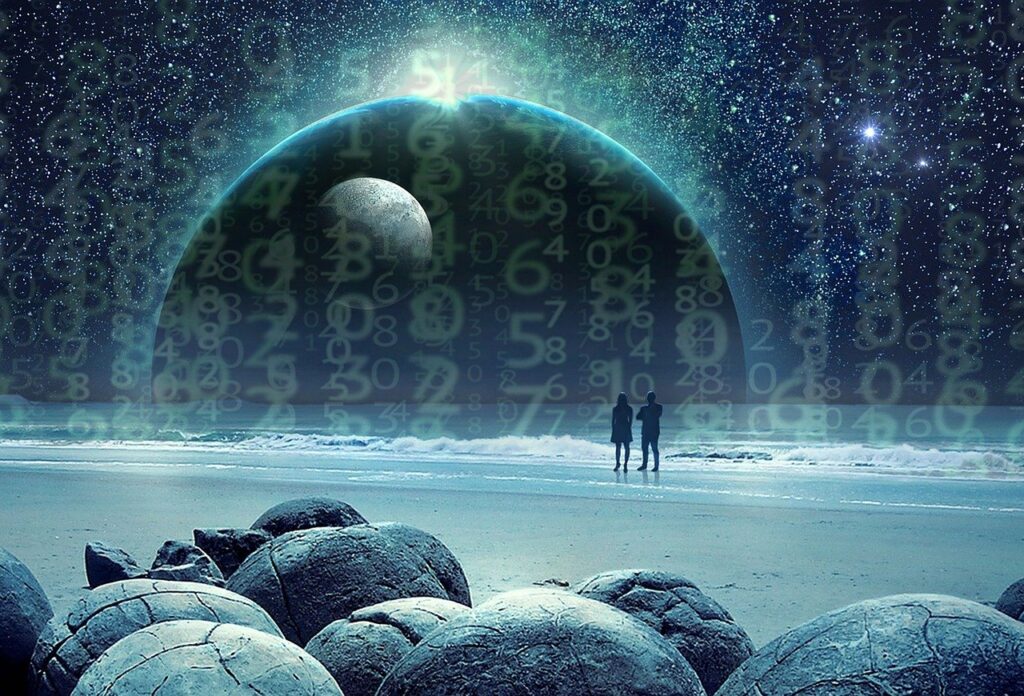
The Simulation Hypothesis challenges the conventional understanding of reality, proposing that our existence may be a sophisticated simulation rather than a tangible, independently existing world.
This idea, rooted in both philosophical speculation and technological advancements, has gained traction in contemporary discourse.
Influential figures like Elon Musk have propelled the hypothesis into the mainstream, prompting debates about the nature of consciousness, free will, and the implications of living in a digitally constructed reality.
From a historical perspective, reflections on the potential illusory nature of reality date back to ancient philosophical inquiries.
However, the modern resurgence of the Simulation Hypothesis can be traced to the convergence of technological progress and philosophical musings.
Recommendation: If you're interested in Simulation Hypothesis we're highly recommending following book: "The Simulation Hypothesis: An MIT Computer Scientist Shows Why AI, Quantum Physics and Eastern Mystics All Agree We Are In a Video Game"
Scientific inquiry into the Simulation Hypothesis explores the possibility of detecting anomalies or glitches in the fabric of spacetime that might suggest a simulated construct.
This blend of theoretical physics and metaphysical speculation underscores the enigmatic nature of the concept. Philosophically, the hypothesis prompts profound questions about the nature of consciousness, the authenticity of human agency, and the implications of living within a digital realm.
If the simulation theory is true, then what is reality in that case?
Well, that again depends on how you define reality. For the person in simulation, his or her reality is subjective. Therefore, no different than it would be if the person is not in the simulation.
But the true reality would be significantly different.
Namely, true reality in the simulation hypothesis consists of robots and computers running the simulation for humans.
However, where is the “host or server” located? What or who runs the host or the simulation?
No one knows!
In a simulated world – do even laws of physics work?
In the perceived real world (without simulation) we’re trying to describe reality by finding the smallest particles that build the sole fabric of the whole universe.
In a simulated world that would probably not work in the same manner.
And so in the end – what did we actually find out?
Did we come to some kind of conclusion created with a mixture of philosophical, scientific, and fiction ideas?
Let’s see.
The True Reality?

Have you ever asked yourself the following questions; What is the reality for someone who is dead or who is not yet born? What is their true reality?
Well, reality does not exist for that person, yet reality (or the world) obviously existed before any of these events (birth or death) occurred.
This leads us to conclude that there are only two possible realities and we need to specifically make a distinction between them.
Those two are the subjective perception of reality vs the true reality.
Now, what do we mean by that?
Well, subjective perception of reality is easy to define. It is simply everything that we see, feel, and overall, what we perceive.
The second definition – the true reality or the true nature of reality is impossible to define.
Because you can only define something that you can completely describe. And you can only completely describe something if you know what it consists of.
You cannot define a chair if you’ve never seen or touched one and if no one previously described to you what the chair is.
Therefore, you cannot define true reality because you’ve never seen one.
We simply don’t have tools to describe ultimate reality. From that perspective, we’re truly blind and we will always stay blind.
There is no cure for that, nor it should exist.
Because if it was that simple for us to see true reality, then our whole life would have no meaning, or even better whole life would be unlivable.
And unlivable lives do not have any reality.
As we mentioned – there is no reality for someone who is not alive or for someone who is not born yet.
One cannot live everything and one cannot see (or smell or sense) everything.
Therefore, one cannot define true & ultimate reality!
Reality defines itself.
Note: If you’re interested in similar articles you can check:
- Dreams: Here’s Everything You Need To Know
- Astonishing: Will We End Up Inside Computer Simulation?
- Simulation Theory: Are We A Part Of It Or Not?
- What Will The World Look Like In 2100?
- How Will The World Look Like in 2030?
- What Will World Look Like In 2050?
- We All Have 24 Hours in a Day? Or Do We?
- Will Time Travel Ever Be Possible?
- Who Wrote Bible – God Or Humans?
- Who Was The First Person On Earth To Die?











